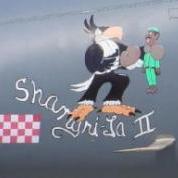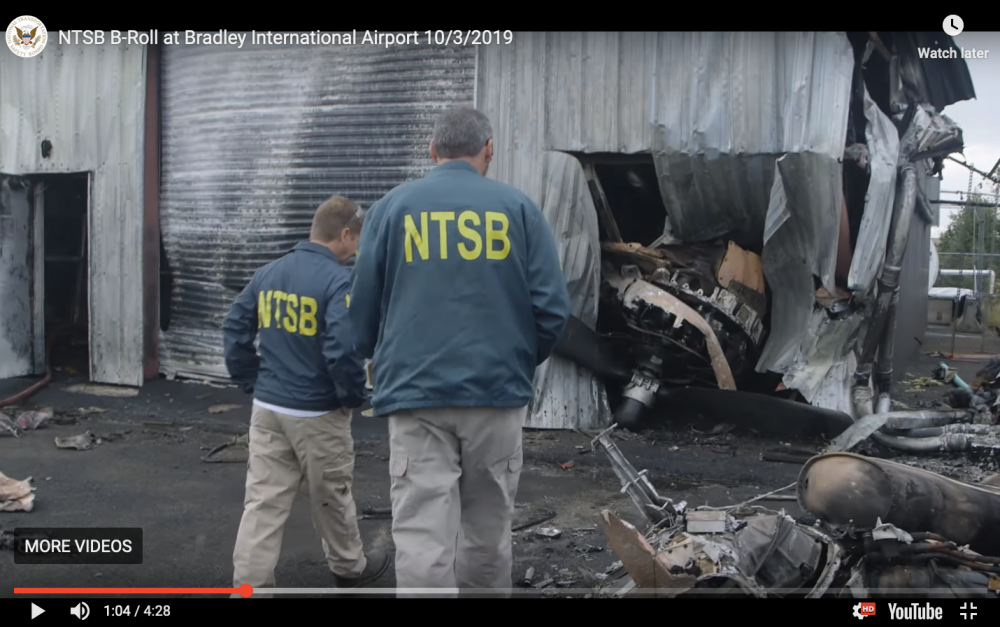-
Posts
2,059 -
Joined
-
Last visited
-
Days Won
93
Content Type
Profiles
Forums
Gallery
Blogs
Downloads
Wiki
Posts posted by Hacker
-
-
9 hours ago, Karl Hungus said:
If APC had existed, you’d read the same from a theoretical Delta forum in the mid-2000s.
APC started in early '05.
If anyone wants to do any archaeology and learn more about their airline's past, the "new" FlightInfo.com forums go back to about 2001. If you think APC is a monkeycrap fight, go check out ol' Flightinfo's archives!
-
 1
1
-
 1
1
-
-
Don't forget that at UPS *everyone* is on the widebody pay scale and at FedEx about 69% of pilots are on widebody pay.
-
On 11/20/2019 at 6:55 PM, bfargin said:
I tried for about 5 years to buy one of the Tweets in the boneyard. Contacted my Senator, some other DOD folks I know, etc with absolutely no luck. Even contacted the State Department about the possibility and it was pretty much a no-go unless the US eventually decided to sell them as scrap.
There are several repatriated export-sale Tweet airframes languishing around that could be made airworthy if you really wanted to.
-
OP, if you don't know why, you haven't been paying attention. Good luck.
-
 2
2
-
 1
1
-
-
8 hours ago, arg said:
Article doesn't say what attitude the plane was in when it touched down. Wondering about a right closed pattern with #4 shut down and possible problems with #3. The article states on #3 "two blades appeared in a position between low pitch and feather", that's where they're supposed to be, the other blade position near feather would mean some sort of material failure.
More likely "material failure" related to the engine getting thrown around post-crash after it separated from the wing.
If you watch the entire video (and with the understanding of the limited info the NTSB video provides) there are some clues to this, especially that the tips of the blades are not curled, as would be evident if the engine were turning at impact. Props rotating and producing power at impact are usually curled forward, while props rotating and not producing power at impact are usually curled aft.
-
 2
2
-
 1
1
-
-
On 9/27/2019 at 8:13 PM, nunya said:
FedEx gives some weight to past aircraft experience. Dunno the details about how that plays out.
With the exception of the MD-11, all initial aircraft and domicile assignments for newhires are based on the last 4 of SSN (9999 highest, 0000 lowest). Newhires put in a dream sheet before day one of indoc, and available assignments are handed out in seniority order.
MD-11 assignments are selected separately, before day one of indoc by the company, and this is where previous experience is involved. Because of the finicky landing performance of the airplane, and the accident record at FedEx, they are looking for specific experience to send newhires to the airplane. For some reason they like Navy carrier guys, C-17 guys, and of course KC-10 guys, but that's not all inclusive.
-
Those evil airsoft pellets!
-
According to Salon:
Last Friday, Politico
reported that the House has been investigating a strange incident in which the Air Force made an unusual refueling stop at a small government-owned airport in Scotland that just happened to be next to Trump's failing golf course in Turnberry. The crew was befuddled at the order, and even more so when they ended up at Trump's pricey club, feeling out of place and without enough per-diem money to buy food and drink. It was, to say the least, unexpected.That's some world-class "reporting".
-
 2
2
-
-
13 hours ago, Bender said:
One of the big issues with UPT is we keep changing things and have made ZERO effort to analyze what the impacts of those changes have been. We celebrate those that promote change, promote them, send them to school, and then start working to change things again...without a sliver of desire to track anything or quantify anything.
"We care how things look, not how things are" is far from a UPT-centric problem.
That is a core AF competency, unfortunately, that is going to take a generation to un-screw.
-
 2
2
-
 4
4
-
-
Biden got on the "mandatory assault weapons buyback" train a couple days ago, too.
How can you "buy back" what you have never owned to begin with??
-
 2
2
-
-
Just now, Bender said:
It’s been a long time since I had to be smart, but 0.5 doesn’t seem all that exciting. If 1.0 is perfect (-1.0 being negatively perfect), wouldn’t .5 mean maybe could mean something positive but only half sure?
Honestly couldn't tell you.
I do have a bunch of undergrad education in social statistics, but much of that at this point is lost to history. I had the pleasure of working with Dr Patterson and Dr Carretta down at Brooks back in the mid '00s while I was going through a medical issue, though, and I did hear them discuss this topic (the validity of various methodologies in selecting pilot candidates) in detail.
They had piles and piles of data that they were constantly compiling and evaluating, and were eager to tweak their algorithms when they found something new.
They were actually quite excited that the PCSM had held up with a correlation that was statistically significant over time (at that point, more than a decade of use and something like 10,000 pilots it had been used on).
Beyond that, I'm out of my depth in this discussion. I don't know if Carretta is still working for the AF, but Patterson has since retired...might want to look them up and ask the question if you're really interested in an informed answer.
-
32 minutes ago, MCO said:
No, a good PCSM from what I saw was just a decent indicator.
There's actually a pretty close statistical correlation between PCSM and success at UPT.
Anecdotes aside, that's what the data says. That's kind of the entire point behind its existence.
To wit:
https://psycnet.apa.org/record/2011-11428-002
Pilot Candidate Selection Method: Still an effective predictor of US Air Force pilot training performance.
-
 1
1
-
-
On 8/31/2019 at 3:44 PM, M2 said:
WTF is this?
Obviously it's two F-104 Starfighter pilots from 1960; but what the hell are those berets about?!?
Can't speak for those fellas, but one of the now-F-15E squadrons wore berets at one point back in the day, too: the 492d "Madhatters". They picked up the squadron nickname from having adopted the headgear local to where they were based (and the unit moved around quite a bit in the postwar/interwar years) and that included berets while in France.
Since they're UK-based now, it is a British bowler hat currently.
-
 1
1
-
 3
3
-
-
On 8/30/2019 at 9:02 PM, Bender said:
You a fan of loaded questions? Why not provide your own intelligent perspective on PTN rather than offer it up like meat to lions?
Jim is a retired F-111 WSO, so he doesn't know. He's asking those who do, since it doesn't seem to make sense to someone with plenty of military aviation experience but who has been away from the game for a while. I can see why, from his perspective, it seems like a very stupid idea.
-
 1
1
-
-
18 hours ago, Standby said:
Makes sense that attrition was higher when everybody flew the T-38.
...and when a UPT Wing Commander's job effectiveness wasn't measured using graduation rate.
-
 2
2
-
-
As I've frequently posted, this is the annual total UPT attrition per FY (from the AF's circa 2001 study of effectiveness of UPT student selection methods).
There are plenty of individual class at individual base snapshots that show extremely high attrition, but given these overall numbers there were obviously classes with substantially higher graduation percentages that offset the high numbers.
-
 3
3
-
-
On 8/10/2019 at 5:42 AM, ImNotARobot said:
These days? That’s been the standard for the last 20 years I’ve been in uniform. CCs protecting their future promotions by showing their boss they can “take the hard line and instill discipline” through totally annihilation of the target regardless of the details.
It’s cancer.I can honestly say "it wasn't like that" in the places I was in during the mid-late 90s (both as a non-flyer and a flyer). I had CCs who actually attempted to give rudder corrections first, and mete out punishment when they had to to guys who colored outside the lines but were otherwise good folks that wouldn't leave a mark.
Personally, I saw this change between 2001-2005 to the "a good leader is one who kills flies with sledgehammers" that we see currently.
-
 1
1
-
 1
1
-
-
3 hours ago, viper154 said:
It’s going to be a staff of physical trainers, physical therapists, dietitians, dedicated to only aircrew. They are suppose to have their own gym, and biometric equipment for analysis of improvements. Any aircrew on base can walk in and get help, and their services are suppose to be oriented to help aircrew better operate in their crew position. Having back issues being in the seat? Expect them to help get you on a training program to strengthen back muscles and focus on making it more comfortable. They were getting fam rides on the jets to become more familiar with our operating environment to better help us.
That's the first intelligent fitness-related development I've seen from the USAF since 1991.
As a fighter back-injury-sufferer, I could've used a little of that rather than "take some Motrin and get on the flying schedule next week".
-
 1
1
-
-
4 hours ago, viper154 said:
If you fly something that makes things go boom and don’t think you could get caught up in the heat of battle and make a mistake you are dead ass wrong.
Among all of the institutionally-biased informed and uninformed opinions on the matter, this is really the bottom line.
War is an ugly business -- and it is meant to be.
-
8 hours ago, JeremiahWeed said:
Is there really a CVR in an F-18G? Or are we talking about some kind of mission debrief asset that records comm, tactical displays, etc. at the command of the crew actually in the jet?
Can't speak for the Growler, but when I was leaving the F-15E they were retrofitting the fleet with solid-state digital recorders that simultaneously recorded all of the displays and all the comm for debrief. Sort of a digital super-VTR.
I'm sure that's what they're talking about, and not a "CVR".
-
Danerys has needed to hire an ALO for quite some time. Her dragon tactics have been ass for more than just this season.
-
On 4/15/2019 at 7:59 PM, nunya said:
I don't think the airlines need a safety down day, if that's what you're getting at.
Every day is a safety down day at the airlines.
-
 1
1
-
-
12 hours ago, HossHarris said:

Oh, no, I got your mockery of the post you quoted...I was steering that part of the convo in a different direction.
-
2 hours ago, Hawg15 said:
Is it really realistic that they accidentally wound up almost 50 degrees nose low responding to a power increase? I’ve never flown a big old airliner, I just feel it would take a good amount of time to get that nose low without a malfunction, and would be incredibly uncomfortable if you happen to look out the window. But I’m just a guy that knows nothing about computers being involved in controlling a plane.
The speculation that I've heard was that there was a combination of basically spatial D and poor airmanship.
The spatial D was the minor upset while IMC, perhaps with a somatogravic "head-up illusion" where the FO perceived the acceleration as a more dramatic pitch-up than what actually occurred (and requiring a more dramatic pitch-down to counter). It may have also been combined with a flight director commanding something that also didn't add up in the FO's mind.
The poor airmanship was just the inability to fight through the startle effect, turn off the automation, get on the dials, and just fly the airplane.
One of the 767 sim instructors I know said it was like a 4-5 second duration, full-yoke-forward input required to get to 49 degrees nose low. The only way I can see that is with the FO just basically becoming frozen by the startle effect and unable to mentally sort out what was happening.
Sometimes good pilots make huge mistakes. Sometimes poor pilots make even bigger ones.
-
 1
1
-
 1
1
-





The new airline thread
in Squadron Bar
Posted
I'm wondering when the 737 Max passenger-to-freighter conversion will be announced...and if Purple will be the launch customer, hehe.
Fred loves a good deal...and I bet there'll be a fire sale of customer return Maxes at some point.